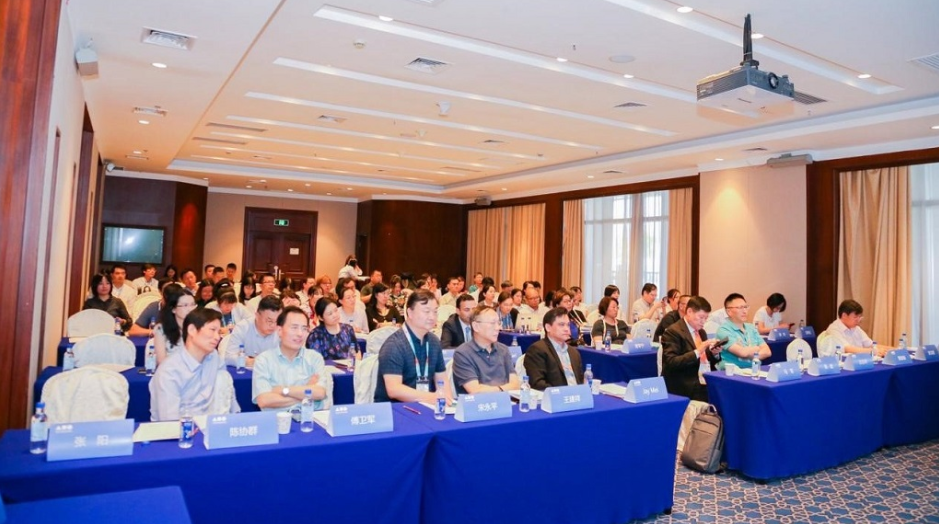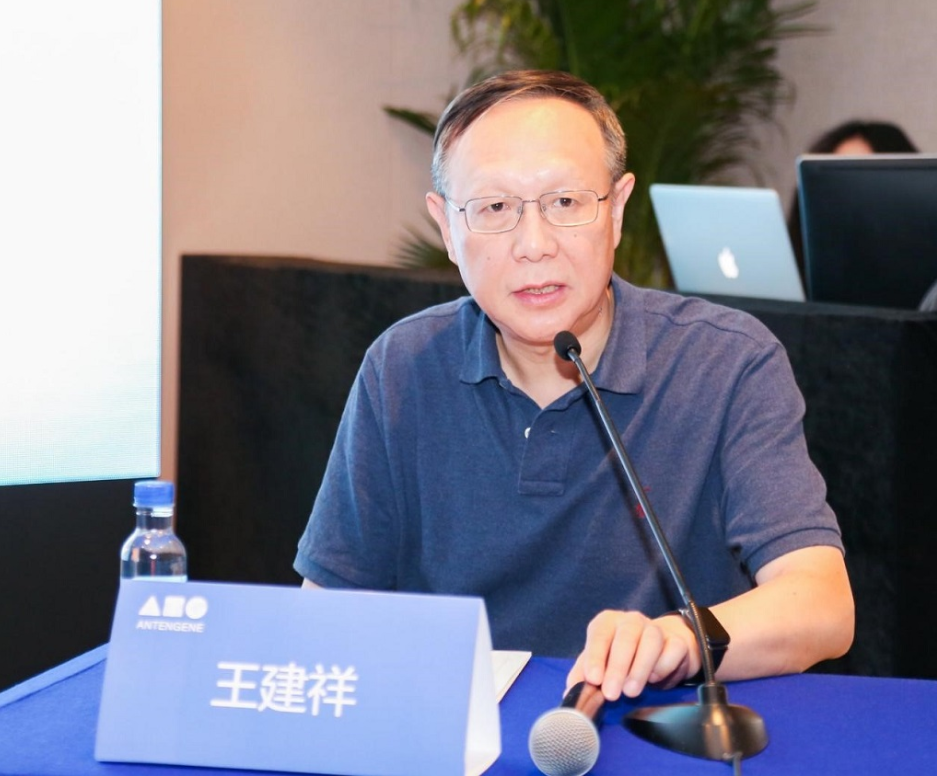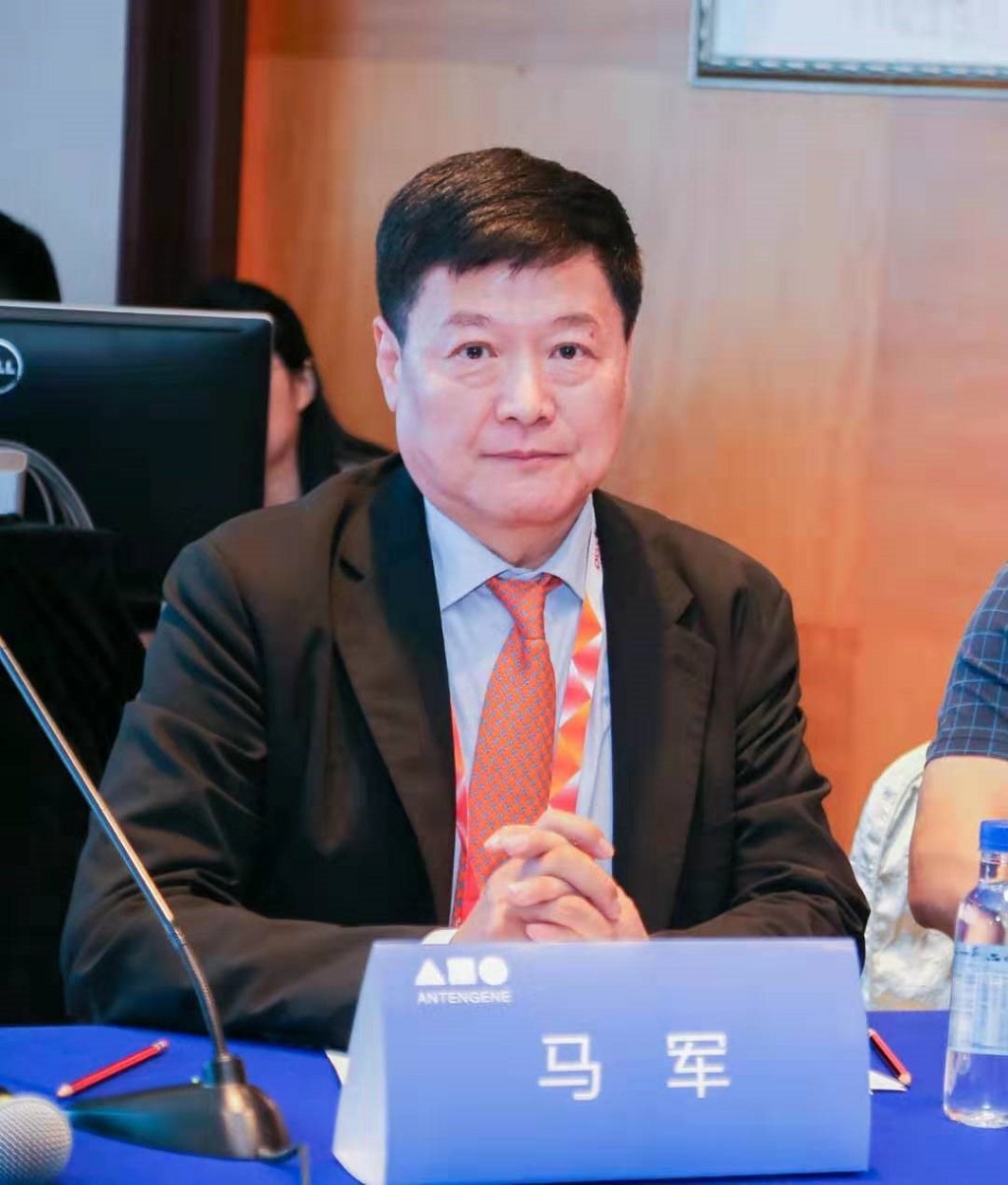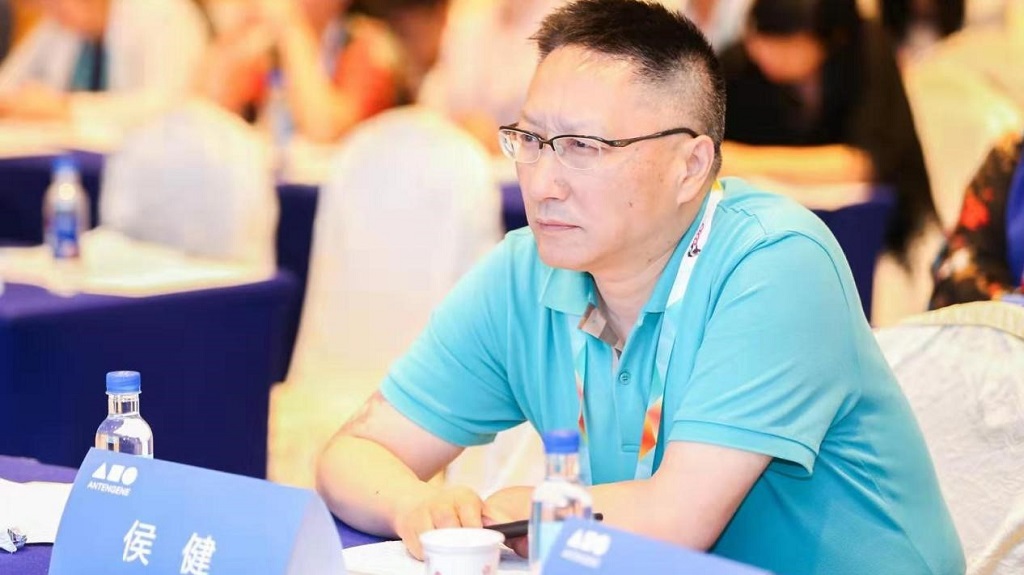Latest Progress in the treatment of blood cancer with Selinexor, a selective inhibitor of nuclear export


On September 19, 2019, a conference on the latest academic progress in the treatment of multiple myeloma and diffuse large B-cell lymphoma with ATG-010 (Selinexor), the world’s first selective inhibitor of nuclear export (SINE) protein (XPO1/CRM1), was successfully held in the Xiamen International Conference & Exhibition Center with the support of Antengene, attracting a great number of clinicians in the field of blood cancer.
Chairmen of the conference were Professor Shen Zhixiang of Ruijin Hospital affiliated to Shanghai Jiaotong University, Professor Wang Jianxiang of the Hematology Hospital of the Chinese Academy of Medical Sciences, Professor Ma Jun of Harbin First Hospital, Professor Zhu Jun of Beijing Cancer Hospital, Professor Huang Huiqiang of Sun Yat-sen University’s Affiliated Oncology Hospital, Professor Hou Jian of Renji Hospital affiliated to Shanghai Jiaotong University Medical College, and Professor Fu Weijun of Shanghai Changzheng Hospital. Five experts and scholars at home and abroad delivered keynote speeches at the conference.
Chairmen’s Message
Professor Wang Jianxiang, Professor Ma Jun and Professor Hou Jian opened the conference by pointing out that Selinexor, a selective inhibitor of nuclear export, was a breakthrough in the field of blood cancer in recent years. Evidence suggests that Selinexor can be effective in treating patients with multiple myeloma, even after the failure in the fifth-line treatment. At present, clinical trials for the treatment of multiple myeloma with Selinexor are being carried out in China. Chairmen look forward to the success of the trials and expect Selinexor’s entering into the Chinese market, thus more benefits can be brought to the patients with myeloma, lymphoma and other diseases in China.
From left to right:Professor Wang Jianxiang, Professor Ma Jun, Professor Hou Jian



Experts report on Selinexor’s R&D process and future development
In 2010, Selinexor’s anti-tumor efficacy was observed in the mouse xenograft model for the first time. In 2012, the first clinical study of Selinexor was conducted. During the period 2015-2019, a number of IND applications were approved. Indications of blood cancer clinical study include multiple myeloma (STORM/STOMP/BOSTON study), diffuse large B-cell lymphoma (SADAL study), etc. Currently, more than 3,100 patients have been treated with Selinexor. On July 3, 2019, Selinexor received the New Drug Application approval from the U.S. Food and Drug Administration (FDA) for the treatment of patients with refractory and/or relapsed multiple myeloma, and has already been listed as a recommended drug in the U.S. NCCN Clinical Practice Guidelines for Multiple Myeloma.
In the report, Dr. Wang Hongwei, Vice President of Clinical Research and Development at Karyopharm, Antengene’s partner, noted that the safety of Selinexor’s clinical use is controllable, and that there are no drug contraindications or boxed warning in FDA-approved medication guide. In addition to blood cancer, research is also under way to evaluate Selinexor’s treatment of solid tumors, including liposarcoma (SEAL study), endometrial carcinoma (SIENDO), glioblastoma (KING study), etc.. Dr. Yang Yijun, Vice President of Clinical Pharmacology at Antengene, said that MARCH study, the clinical researches on multiple myeloma in China, has been carried out. The future of the study is promising and worth waiting for.
STORM Study: Selinexor combined with low-dose dexamethasone to treat patients with penta-relapsed multiple myeloma and multiple myeloma refractory to three types of myeloma drugs
Associate Professor Ajai Chari of the Icahn School of Medicine at Mount Sinai noted that the phase IIb of STORM study is the prospective clinical study by far including the greatest number of patients (122 cases) with penta-relapsed multiple myeloma and multiple myeloma refractory to three types of myeloma drugs including immunomodulators (lenalidomide or pomalidomide), protease inhibitors (bortezomib or carfilzomib) and anti-CD38 monoclonal antibody, for assessing the effectiveness of Selinexor combined with low-dose dexamethasone. Safety results suggest that common adverse events of level 3 or above involve the blood system, gastrointestinal tract and low sodium. Most of these adverse events are reversible and can be well managed by active supportive care and dose adjustment. The efficacy results suggest that the overall response rate (ORR) of patients with penta-relapsed multiple myeloma and multiple myeloma refractory to three types of myeloma drugs is 26.2%, and the ORR among the 83 patients refractory to all five myeloma drugs reaches 25.3%. The median time for OR is 1 month, while the duration of response can be as long as 4.4 months. Patients with minimal response (MR) or better (approximately 40%) have a median overall survival (mOS) of 15.6 months, but the median overall survival of the patients with progressive or non-assessable disease is only 1.7 months. Besides, follow-up analysis of the STORM study shows that Selinexor is effective in improving the kidney function of patients with refractory and/or relapsed multiple myeloma. Associate Professor Chari noted that Selinexor was the first oral drug to show activity in patients with penta-refractory multiple myeloma.
STOMP Study: Phase I/II clinical study of Selinexor and low-dose dexamethasone combined with multiple approved therapies for treating refractory and/or relapsed multiple myeloma Professor Fu Weijun pointed out that the STOMP study was a phase I/II clinical study exploring the combination of Selinexor and low-dose dexamethasone with multiple approved therapies (bortezomib/lenalidomide/daratumumab/carfilzomib/pomalidomide, the first three having been approved in China) to treat refractory and/or relapsed multiple myeloma.
Safety results indicate that a variety of combination therapies are safe with adverse events under control. The efficacy results suggest that combination therapy has better and longer-lasting effects in patients with refractory and/or relapsed multiple myeloma. More specifically, it means quicker drug effects, further remission with prolonged treatment, certain curative effects achieved by the combination of selinexor and the drugs that patients have developed the resistance and better RR and progression-free survival (PFS) in non-refractory patients. The above research results support further exploration of Selinexor combination therapies, including those for newly diagnosed and refractory and/or relapsed multiple myeloma. BOSTON study, the global phase III study of Selinexor in combination with bortezomib and low-dose dexamethasone for the treatment of patients with refractory and/or relapsed multiple myeloma who have had first to third lines of therapy has completed the patients’ enrollment and is expected to apply for NDA next year.
SADAL Study: Clinical Study of treatment for refractory and/or relapsed diffuse large B-cell lymphoma with Selinexor
Professor Song Yuqin pointed out that SADAL is a phase II clinical research/ trial for NDA. It studies the safety and efficacy of selinexor monotherapy in the treatment of relapsed or refractory diffuse large B-cell lymphoma (ineligible for high-dose chemotherapy and autologous stem cell transplantation, and for patients with prior second-line therapy or above).
The effectiveness results show that the monotherapy treatment help some patients with refractory and/or relapsed diffuse large B-cell lymphoma obtain deep and lasting curative effects. More specifically, the results show that the ORR, CR of patients are respectively 28.3% (33.9% for GCB subtype and 20.6% for non-GCB), 10.2%, and the mDOR and the median survival is respectively 9.2 months (13.5 months for CR patients) and 9 months (the median survival of CR/PR patients has not yet been achieved); better efficacy has been observed in patients with fewer previous treatment lines. Selinexor monotherapy is safe with adverse events being predictable, and effective management can be achieved by strengthening supportive treatment and adjusting drug management. The above results show that Selinexor monotherapy provides a new mechanism for the treatment of refractory and/or relapsed diffuse large B-cell lymphoma. Selinexor combination therapy is also under exploration.
In addition, the SEARCH study (based on the Chinese) for the treatment of refractory and/or relapsed diffuse large B cell lymphoma with Selinexor is currently being carried out by Beijing Cancer Hospital and other 13 China’s research centers.
About Antengene
Antengene Corporation is a biopharmaceutical company focused on drug discovery, clinical development and the commercialization of innovative therapeutics to meet unmet medical needs. Antengene aims to provide the most advanced and first-in-class anti-cancer drug treatments for patients around the world. On April 13, 2017, Celgene Corporation (NASDAQ: CELG), a global leading innovative biopharmaceutical company became a long-term strategic partner and obtained an equity position in Antengene. Antengene’s pipeline includes six commercial and clinical stage products: ATG-010 (selinexor), in combination with the corticosteroid dexamethasone, has been approved by the U.S. Food and Drug Administration, for the treatment of adult patients with relapsed or refractory multiple myeloma. The compound is also in late clinical development for various other hematologic malignancies and solid tumors. ATG-008, a second-generation dual mTORC1/2 inhibitor, is in a multi-regional clinical trial for treatment of hepatocellular carcinoma and multiple other solid tumors. Two other Phase 1 and Phase 2 clinical stage drugs, ATG-016 and ATG-019, are being studied in multiple cancer types, including MDS, colorectal and prostate cancers. ATG-527 is being explored for multiple anti-viral indications, including respiratory syncytial virus (RSV), and Epstein-Barr virus (EBV) related diseases, etc. ATG-017 is a potent and selective small molecule extracellular signal–regulated kinases 1 and 2 (ERK1/2) inhibitor, in clinical development for multiple solid tumors. Antengene drug discovery team focuses on development of first-in-class novel products.







